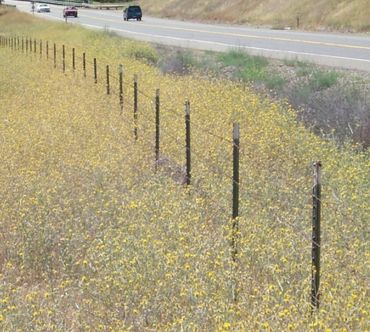Yellow Starthistle






Details and Information
Common Names
Yellow Star-Thistle
Description
Yellow starthistle is a tap-rooted annual forb in the Asteraceae (Sunflower) family. Yellow solitary flowers have stiff, 1-inch spines protruding from their involucre. Basal leaves are deeply lobed, upper leaves are small and sharply pointed, and leaves and stem are covered with cottony fiber.
Key Features
Yellow "dandilion-like" flowers with sharp pointed thorns at the base. Grey-green plant with rigid appearance.
Habitat
Yellow star-thistle prefers deep loamy soils with south facing slopes and 12 to 25 inches or more of annual rainfall with a bimodal distribution in the fall and spring. It favors perennial bunchgrass communities dominated by bluebunch wheatgrass, Idaho fescue, and Sandberg’s bluegrass. Although it does not compete well with sagebrush, it readily invades sagebrush communities after disturbance. It is most common in disturbed areas in full sun, such as rangelands, along highways or roads, railroad tracks and other transportation or communication lines
Control
There are many herbicides effective for controlling yellow star-thistle including glyphosate, 2,4-D, picloram, dicamba, clopyralid and others. For optimal population regulation, herbicide should be applied at the transitional stage from rosettes to flowers and before the population has advanced. Hand pulling and digging is also an effective control method if done before seed production. For more information contact the Weed and Pest office.
Other Facts
Yellow Starthistle can cause "chewing disease" similar to that of Russian knapweed. It causes prehension of the facial muscles and chewing muscles. However, rosettes can be grazed before flower production.
Cookie Policy
This website uses cookies. By continuing to use this site, you accept our use of cookies.